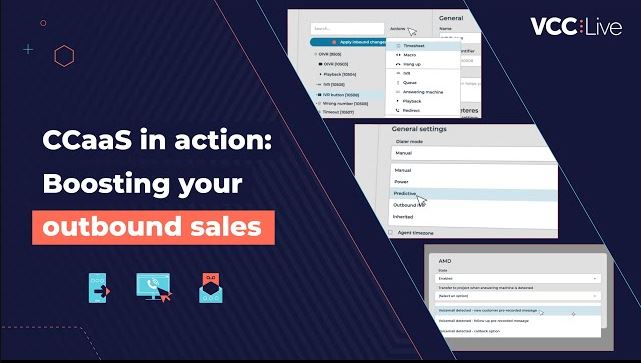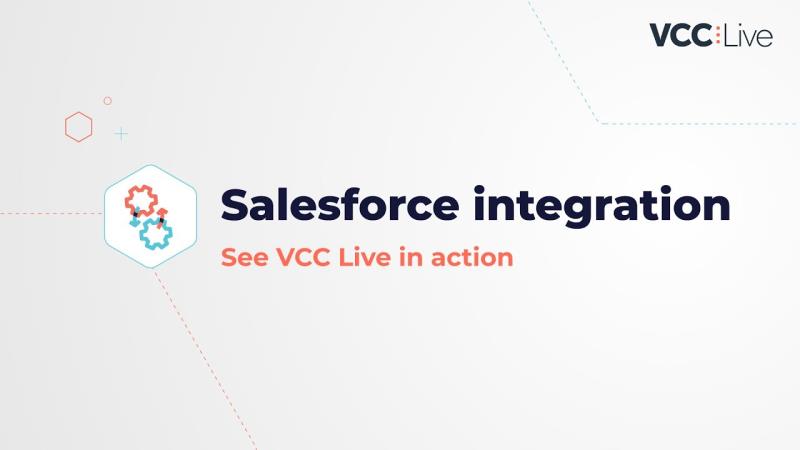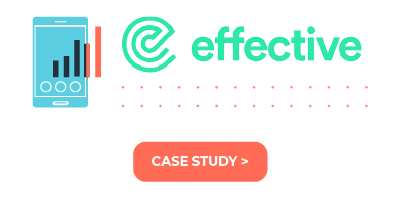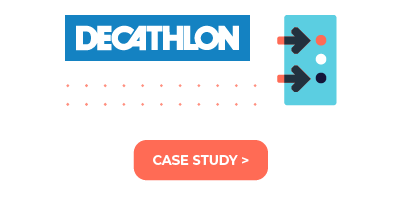The Basics of Contact Center Reporting and Monitoring
Estimated reading time: 11 minutes | Target users: New users
An extensive number of reporting and monitoring tools are available in VCC Live. They allow you to quickly get an insight into your projects, resources, and user activities.
In this lesson, you will learn:
- What a reporting and monitoring tool is
- What type of reporting and monitoring tools there are
- Which tools you should get started with
1. Reporting and Monitoring Tools
Operating a contact center business of any size is a complex task. Agents often handle hundreds of queries on a daily basis via a number of different channels. And supervisors, as well as making sure daily workloads are divided equally, also need to focus on long-term planning, such as clarifying the number of agents needed in order to run the business smoothly.
As a result, supervisors and managers are required to process a large amount of data. Reporting and monitoring tools help with this activity by making it quick and easy to collect and present relevant data.
2. Type of Reporting and Monitoring Tools
We distinguish 3 types of measurements tools based on the type of data they present. In addition, we also distinguish measurement tools based on their scope. Global measurement tools represent data for all your projects, while project-specific measurement tools show data specific to a chosen project.
2.1 Logs
Logs provide detailed records of calls, chat conversations, emails, text messages, and users’ activities and status. Details include the duration, source, target, timestamp, outcome, and content of communication activities, as well as what tasks users carry out, how much time they spend working or on a break, and more.
2.2 Monitoring
Monitoring enables you to get an insight into daily operations in real time. Users can observe and check the progress, quality, and quantity of inbound and outbound calls, as well as track current changes in, for example, survey projects.
2.3 Statistics
Statistics present quantitative data regarding changes related to the database, dispositions used, and calls over a period of time.
3. Tools to Get Started With
Having this many logs, monitoring, and statistics tools may seem overwhelming at first. That is why we recommend you get acquainted with the most important ones first: CDR Logs and Inbound Statistics.
3.1 CDR Log
The CDR (Call Detail Record) log lists all records generated in a specific project for a specific period. It allows you to see the direction of the call, the caller and called contact’s name, call time and duration, whether the call was terminated or rejected, the different states of the entire call including their duration, and much more. You can also download and listen to call recordings. The CDR log is a project-specific measurement tool.
Let’s start with opening the CDR Log worksheet.
- Select a project from the project list, then select Logs and statistics > CDR log.
- Set the time period you need the log for.
- Press Search to get the results.
A lot of data is presented in various columns. But what columns should you look at? Let’s go through the most important columns. If there is a column you cannot see, you can add or remove additional ones by using the button.
| Column | Explanation |
|---|---|
| Listen |
Hover your mouse over a record, then press |
| Download |
Hover your mouse over a record, then press |
| Source | Caller phone number. Zero means hidden callerID. |
| Destination | Called phone number. |
| Direction | Direction of the call: inbound or outbound. |
| Start/answer time | Timestamp for the start of the conversation involving an agent. |
| Ring time | The time which elapses between when the call is initiated, and when it is answered. |
| Talk time | Length of the conversation. Zero means an unanswered call. |
| Time in queue | The time which elapses between the client reaching the queue, and an agent answering the call (or the client ending the call). |
| Afterwork | The time which elapses between when a call is hung up and when a disposition is saved. Zero means the disposition was selected before hang up, or there was no call. |
| Disposition | Disposition allocated to the record. |
3.2 Inbound Statistics
Inbound statistics show details of your inbound calls, including SLA (time allowed for answering calls), total number of calls, currently queuing calls, and more. There are both global and project-specific inbound statistics.
Let’s open the global inbound statistics worksheet. Global measurement tools are available via the VCC Live menu.
- From the VCC Live menu, select Logs and Statistics > Global Inbound Statistics.
- Set the time period you need the statistics for.
- Press Search to get the results.
Now let’s open the project-specific inbound statistics worksheet. Project-specific measurement tools can be accessed in the project settings.
- Select a project from the project list, then select Logs and statistics > Inbound Statistics.
- Set the time interval you need the statistics for.
- Press Search to get the results.
The inbound statistics has plenty of data to show off as well. Let’s go through the most important columns.
| Column | Explanation |
|---|---|
| SLA | Service-level agreement. Formula: (Picked up in time + Disconnected in queue) / Total calls reached the queue. |
| Total calls | Sum of all inbound calls. |
| In queue | Calls which reached the queue and were picked up. |
| Picked up in time (SLA) | Picked up within the SLA value set. Default value: 30 seconds. You can modify the SLA value. See To Set SLA Time. |
| Picked up in time (%) | Formula: Picked up within the SLA value / In queue. |
| Picked up after limit (SLA) | Call answered beyond the SLA value. |
| Answered after time (%) | Formula: Picked up beyond the SLA value / In queue. |
| Disconnected in queue | Call disconnected in queue within the SLA value. |
| Disconnected in queue (%) | Formula: Disconnected in queue / In queue. |
| Disconnected after queue SLA limit | Disconnected in queue, beyond the SLA value. |
| Disconnected after queue SLA limit (%) | Formula: Disconnected beyond the queue SLA value / In queue. |
| Time in queue | The time which elapses between the client reaching a queue, and an agent answering the call. |
| Average time in queue | Formula: Time in queue / In queue. Time in queue is the total time for all calls from the moment the queue was reached. |
| Talktime | Conversation length. Zero means unanswered call. |
| Average talktime | Formula: Talk time / Answered in time + Answered beyond time. |
Congratulations!
You’ve just get acquainted with the basics of measurement tools in VCC Live.
Note: Learn more about all reporting and monitoring tools in VCC Live here.








Comments
Can’t find what you need? Use the comment section below to connect with others, get answers from our experts, or share your ideas with us.
There are no comments yet.